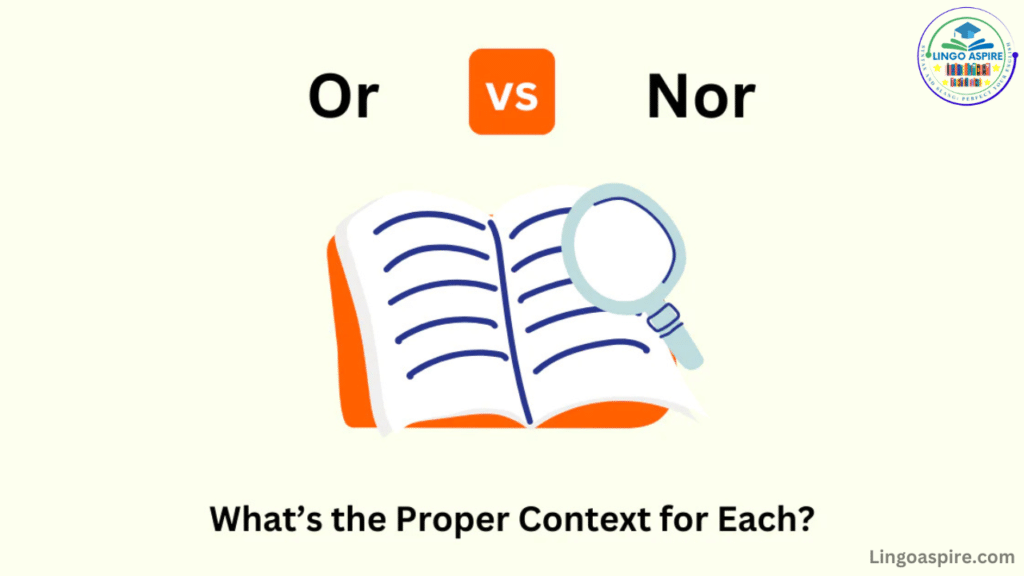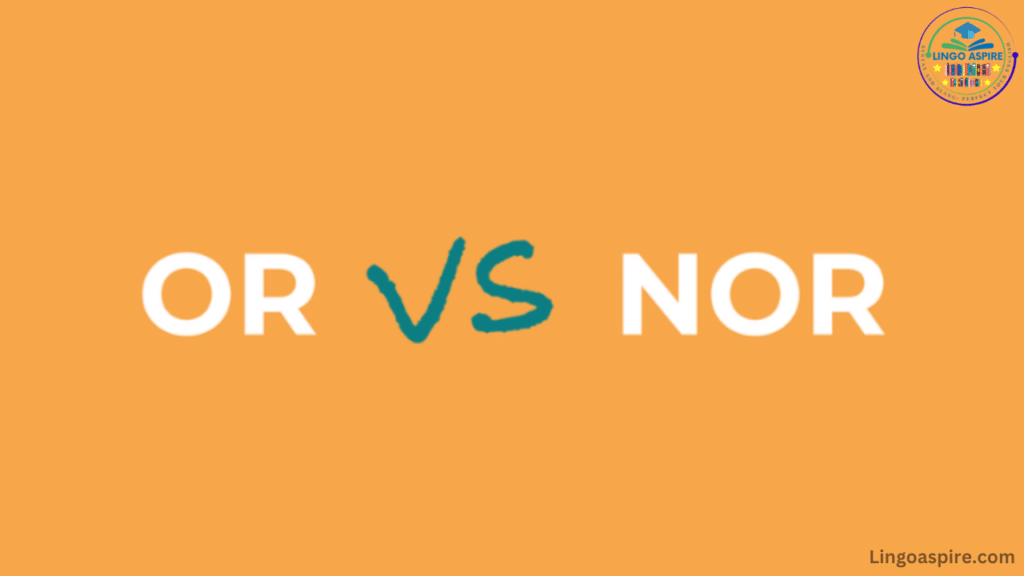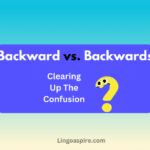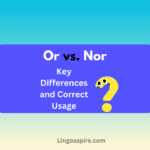Many people struggle with the difference between “or vs. nor” in English. These words may seem similar, but they have distinct roles in English grammar rules. Understanding how to use them correctly is essential for clear sentence structure and effective communication.
“Or” and “nor” act as coordinating conjunctions, meaning they connect words, phrases, or clauses. However, their uses differ. “Or” presents choices or conditions, while “nor” is used for negative statements. Misusing these words is one of the most common grammar mistakes, so this guide will explain their functions and usage and provide or vs. nor examples to help you understand when to use each.
Understanding “Or”

“Or” is used to indicate choices, possibilities, or conditions. It connects two or more items in a sentence and is commonly found in both formal and informal writing.
For example:
- Do you want tea or coffee?
- We can go to the beach or the park.
- You must leave now, or else you will be late.
Key Uses of “Or”
- Presenting Alternative Choices
- “Would you prefer ice cream or cake?”
- “She can study science or history.”
- “Should we drive or take the train?”
- Indicating Possibilities
- “You might get an A or a B on the test.”
- “The meeting could be on Monday or Tuesday.”
- “I may see you today or tomorrow.”
- Conditional Sentences
- “You must hurry, or else you’ll miss the bus.”
- “Study hard, or you will fail the exam.”
- “Be quiet, or the baby will wake up.”
- Connecting Synonyms or Related Words
- “The movie was thrilling or exciting.”
- “He is happy or content with his job.”
- “The color is deep blue or navy.”
Common Mistakes with “Or”
Many learners misuse “or” in negative statements, thinking it works like “nor.” However, “or” should not follow “neither.” For example:
❌ “She likes neither tea or coffee.” ✅ “She likes neither tea nor coffee.”
Understanding “Nor”
Unlike “or,” “nor” is used in negative statements. It follows words like “neither” and is commonly used to avoid repeating “not.”
For example:
- She likes neither tea nor coffee.
- He didn’t call nor did he send a message.
- We couldn’t find the book, nor did we have time to search.
Key Uses of “Nor”
- Combining Negative Statements
- “She doesn’t like football, nor does she enjoy basketball.”
- “We didn’t see the movie, nor did we read the book.”
- “He wasn’t interested, nor was he paying attention.”
- Avoiding Redundancy in Negative Sentences
- “I do not like cats nor dogs.”
- “He was not feeling well, nor was he hungry.”
- “She is not studying math, nor is she learning science.”
- Negative Comparisons
- “The house was neither big nor small.”
- “She is neither happy nor sad about the decision.”
- “They are neither early nor late.”
- Beginning Sentences for Emphasis
- “Nor do I care about what they think.”
- “Nor does she want to discuss the issue further.”
- “Nor should we ignore this problem.”
Common Mistakes with “Nor”
Many learners incorrectly use “nor” without a preceding negative phrase. For example:
❌ “She likes tea nor coffee.” ✅ “She likes neither tea nor coffee.”
Synonyms for “Or vs. Nor”
| Word | Synonym for | Meaning | Example Sentence |
|---|---|---|---|
| Either | Or | One option from two | You can have either tea or coffee. |
| Otherwise | Or | Alternative possibility | Hurry up, otherwise you’ll miss the bus. |
| Alternatively | Or | Another option | We can go by train, alternatively, take a flight. |
| Else | Or | Different choice | Is there anything else you’d like to add? |
| Instead | Or | Substitute choice | Would you like juice instead of soda? |
| Nor | Or | Negative conjunction | She neither drinks coffee nor tea. |
| Neither | Nor | Not one or the other | Neither option seems good. |
| Not either | Nor | Excluding both choices | I’m not either happy nor sad. |
| No more | Nor | None of the given options | I will do it no more, nor will I try again. |
| Not at all | Nor | Complete negation | He wasn’t interested, nor was he involved. |
| Not this, not that | Nor | Exclusion of choices | Not this, not that, just leave me alone. |
| Without | Nor | Absence of something | I can’t live without music, nor books. |
| Yet | Or | Another alternative | It’s expensive, yet it’s worth it. |
| No longer | Nor | Stating what doesn’t happen anymore | She is no longer a teacher, nor a student. |
This table provides synonyms for “or” and “nor” along with their meanings and sentence examples to help clarify usage!
Key Differences Between “Or” and “Nor”

The main difference between or and nor is that or is used in positive or neutral sentences, while nor is used in negative ones. Their grammatical structures also differ.
| Feature | Or | Nor |
|---|---|---|
| Context | Used in positive or neutral sentences | Used in negative sentences |
| Function | Connects choices, conditions, and possibilities | Links two negative ideas |
| Common Pairing | Often used alone | Frequently paired with “neither” |
| Example | “Would you like pizza or pasta?” | “He likes neither pizza nor pasta.” |
Another major difference is that or expresses options or alternatives, while nor eliminates both options. For instance, “You can have coffee or tea” presents a choice, while “You can have neither coffee nor tea” removes both options.
In terms of formality, “nor” tends to sound more formal and is less common in casual speech. You are more likely to hear or in everyday conversations.
Common Mistakes and Misconceptions
One of the biggest mistakes is using nor without a preceding negative. Nor must follow a negative phrase or word, such as “neither.” Saying “I don’t like apples nor oranges” is incorrect. The correct form is, “I like neither apples nor oranges.”
Another mistake is overusing “nor” in informal speech. It is perfectly fine to say, “I don’t like apples or oranges” in everyday conversations. However, in formal writing, “neither…nor” is preferred.
Many writers also forget parallel structure when using “nor.” The sentence parts must be balanced. Saying “She neither likes running nor to swim” is incorrect. It should be “She neither likes running nor swimming.”
Practical Examples of “Or vs. Nor”

Here are some real-world examples to clarify usage.
Using “Or” in Sentences
- Would you like cake or ice cream?
- He can call me today or tomorrow.
- You should leave now, or else you’ll be late.
- Study hard, or you won’t pass the test.
Using “Nor” in Sentences
- She likes neither chocolate nor vanilla.
- He doesn’t enjoy horror movies, nor does he like action films.
- I can’t sing, nor can I dance.
- The weather was not warm, nor was it sunny.
Historical Origins and Evolution
The word “or” comes from Old English “oor” and Old Norse “eller,” both meaning “alternative or choice.” It has been used in English for centuries and remains essential for forming comparisons and conditions.
The word “nor” is a contraction of “neither” and “or.” It evolved from Middle English and Old Norse roots, where “nor” was used to connect negative statements. Over time, its usage became more structured, and today, it is mostly found in formal writing and speech.
FAQs About Or vs. Nor
1. When should I use “or vs. nor” in a sentence?
Use “or” for choices or possibilities (e.g., “Tea or coffee?”). Use “nor” in negative statements, usually with “neither” (e.g., “Neither tea nor coffee”).
2. Can “nor” be used without “neither”?
Yes, but it must follow a negative clause. Example: “He didn’t call, nor did he text.”
3. What is the most common mistake with “or” and “nor”?
A common mistake is using “or” instead of “nor” after “neither.” Example: ❌ “Neither Jack or Jill went.” ✅ “Neither Jack nor Jill went.”
Conclusion
Understanding the difference between or and nor is crucial for correct English usage. “Or” is used for choices and possibilities, while “nor” connects negative statements and avoids repetition. Many learners confuse them, but following proper sentence structure and grammar comparisons helps eliminate mistakes.
To avoid common grammar mistakes, remember:
- Use “or” for positive options or conditional sentences.
- Use “nor” after negative statements, usually with “neither.”
- Follow proper parallel structure in writing for clarity.
Mastering these words enhances both formal and informal writing. Keep practicing with real-world examples, and soon, you’ll never confuse or vs. nor again!
Sources
- Merriam-Webster Dictionary – Provides definitions, usage notes, and historical origins of or and nor.
- Grammarly Blog – Offers detailed explanations, grammar rules, and common mistakes related to coordinating conjunctions like or and nor.
- Cambridge Dictionary – Gives in-depth examples, sentence structures, and formal vs. informal writing guidelines for or vs. nor.







